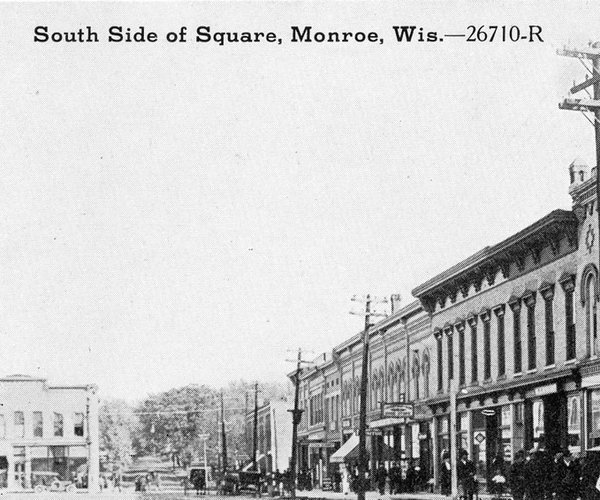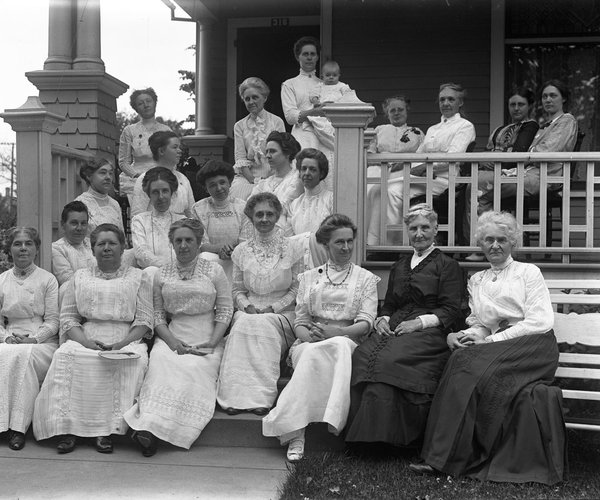As a pre-teen growing up on the farm, I didn’t get to come to Monroe very often. When I did get to ride along with one of my parents, the variety stores were always my favorite store to visit. Those stores, which had previously been called dime stores or five and dimes, sold a variety of items — many of which were priced at a nickel or a dime in the early days. There is a photo and a brief description of one of Monroe’s first variety stores, A & A Variety Store, on page 51 of the Pictorial History of Monroe. The interior of another, the Metropolitan Five to 50 Cent store, is shown on page 20 of the Monroe Area Pictorial History. Today’s dollar stores are the most similar to a variety store from those days gone by.
Many will probably remember Rottler’s on the west side of the square in the 1950s. I had no idea back then that Harold’s grandparents opened Rottler’s Variety Store on 11th Street when they moved here from Galena in 1910. They operated the store until Mr. Rottler’s 74th birthday on April 14, 1929, when he retired and transferred his share to their only child, Roy. That store moved from 1508 11th Street (in the Syndicate Block across from the former parking ramp) to the location that most of us remember on the west side of the square, 1017 16 Avenue, in the late 1930s. Harold operated it until it closed in 1978. Three generations of Rottlers had operated that business for almost seven decades. I didn’t go into that store too much because I think I might have been a little apprehensive of owner Harold. After Rottler’s closed, the building was sold to the Goetz Brothers, who operated Swiss Colony Inn next door.
Richard W. Bahr opened Bahr’s Ben Franklin on Saturday, November 18, 1933 at 1602 11th Street in the Ruf Block. This space had previously been occupied by the Klassy Shop. Bahr, who had moved his family here from Beloit, said at that time that the store would feature 18 departments with items ranging in price from five cents to one dollar. The store, which employed about eight people, would sell dry goods, women’s and children’s clothing, hardware, toilet goods, chinaware, glassware, and much more. A full-page ad in the Thursday edition showed that a pound box of chocolate covered cherries sold for 19 cents and a pound of orange slice for a dime. A list of toiletries that sold for nine cents included hand creams, manicure sets, tooth brushes, tooth pastes, nail clippers, kissproof lipstick, perfumes, and soaps.
Bahr moved his store to the location on the north side of the square, 1611 10th Street, in November 1934. This store had another floor for merchandise on the basement level. Mr. Bahr’s son, Dick, returned from the Army in the fall of 1945 and joined his father in the business in January 1946. They then purchased a variety store in Brodhead from Frederick M. Ties on November 1, 1949; Ties had operated that store since 1941. Bahrs took immediate possession and signed a five-year lease on the building. The son temporarily managed the new store, commuting between Brodhead and his home in Monroe daily. This store also occupied the main floor and basement.
Dick Bahr announced on January 6, 1960 that he had purchased his father’s interest in the variety stores, becoming the sole proprietor of both locations. The father then retired, but planned “to be employed at the store periodically.” It is unknown how long the Brodhead store operated, but the Monroe store closed for the last time on Saturday, June 16, 1984. I shall always remember the candy counter that I saw as soon I entered the front of the door of the Monroe store. My favorite was the mixture of outdated holiday candies that had been discounted; I could get more candy for the little bit of money that I had.
The next of the variety stores to arrive was McLellan’s, which opened in the late 1950s, on the location where the former Ludlow Hotel had stood. This variety store was different from the rest in that it was part of a national chain that merged with McCrory’s about the time that the Monroe store opened. This store was very large having three different levels in the newly constructed building that it shared with the J. C. Penney Co. There were three doors through which one could enter the store, two on the west side, near the stairway to the basement, and then one on the north side on the upper level of the main floor. The pet section, with live fish available, was on the west end of the basement.
F. W. Woolworth & Co., a national chain, had operated in the 1930s and 1940s at 923 16th Avenue, in the building that later housed the Monroe Clinic. Woolworths also operated at 1720 10th Street (across from Zesto) until the mid-1960s; Gibson Discount Store took over that location later in the 1960s.
These variety stores all disappeared after the discount stores arrived on the west end of the city. The first to arrive was Monroe Value Village at 98 8th Street, which was first listed in the 1972 city directory. The K Mart Discount Store was first listed at 95 8th Street in the 1976 directory. Wal-Mart opened here on July 13, 1985. There was just no way that a small, locally-owned business was able to compete with the buying power of these national (and now international) chains. Those of us who are old enough to remember these smaller stores can be thankful for the wonderful memories that we have of them.
— Matt Figi is a Monroe resident and a local historian. His column will appear periodically on Saturdays in the Times. He can be reached at mfigi48@tds.net or at 608-325-6503.




